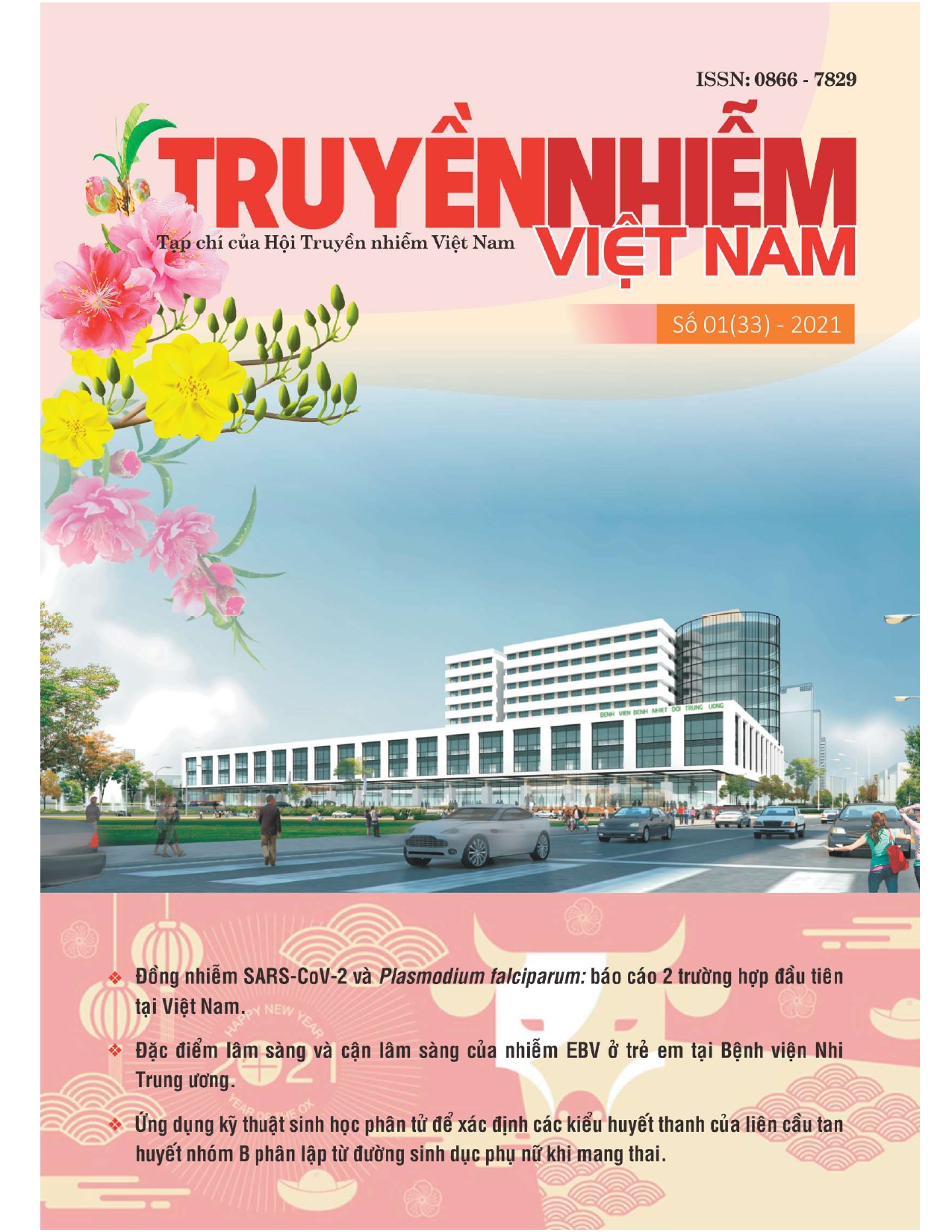STYDY ON THE CLINICAL AND LABORATORY FEATURES OF EBV INFECTION AMONG CHILDEN’S IN NATIONAL CHILDREN’S HOSPITAL
Main Article Content
Abstract
Epstein– Barr virus (EBV) is a member of the herpes virus family, persists asymptomatically in approximately 90% adults. EBV is the main agent of infectious mononucleosis (IM) and associated with the development of some diseases.
Objective: To describe clinical, laboratory characteristics and clinical forms of EBV infection among children in National Children’s Hospital.
Materials and methods: 144 patients, descriptive cross – sectional study.
Results: Median age is 37.4 months, mainly ≤ 60 months, accounts for 84%. The number of male patients are higher than female patients, with ratio roughly 1.6 : 1. Clinical forms are quite diverse: infectious mononucleosis (IM), make up the highest percentage (38.2%), hemophagocytic lymphohistiocytosis (HLH) (18.1%), and lower proportions of hepatitis (7,6%), leukemia (3,5%), CAEBV (2,1%) and lymphoma (1,4%). In IM, common symptoms are fever (98.2%), hepatomegaly(60,8%), splenomegaly (58,8%), pharyngitis (54,9%), convulsion (2%), jaundice (5.9%). Lymphocytosis and monocytosis occupied higherrate, at 100% and 54.9% respectively. In HLH, all patients have fever, hepatomegaly, anemia (92.3%), splenomegaly (76.9%), and lower percentage with edema, ascites (11.5%). Elevated aminotransferase are mainly at mild and moderate level (≤ 500 U/L), no differences between IM and HLH (p > 0.05). To compare IM with HLH: Ratio of fever’s period >14 days and level, hepatomegaly rate and anemia is significantly higher in HLH than in IM (p<0.05).
Article Details
Keywords
Epstein– Barr virus (EBV), infectious mononucleosis (IM), hemophagocytocis lymphohistiocytocis (HLH)


